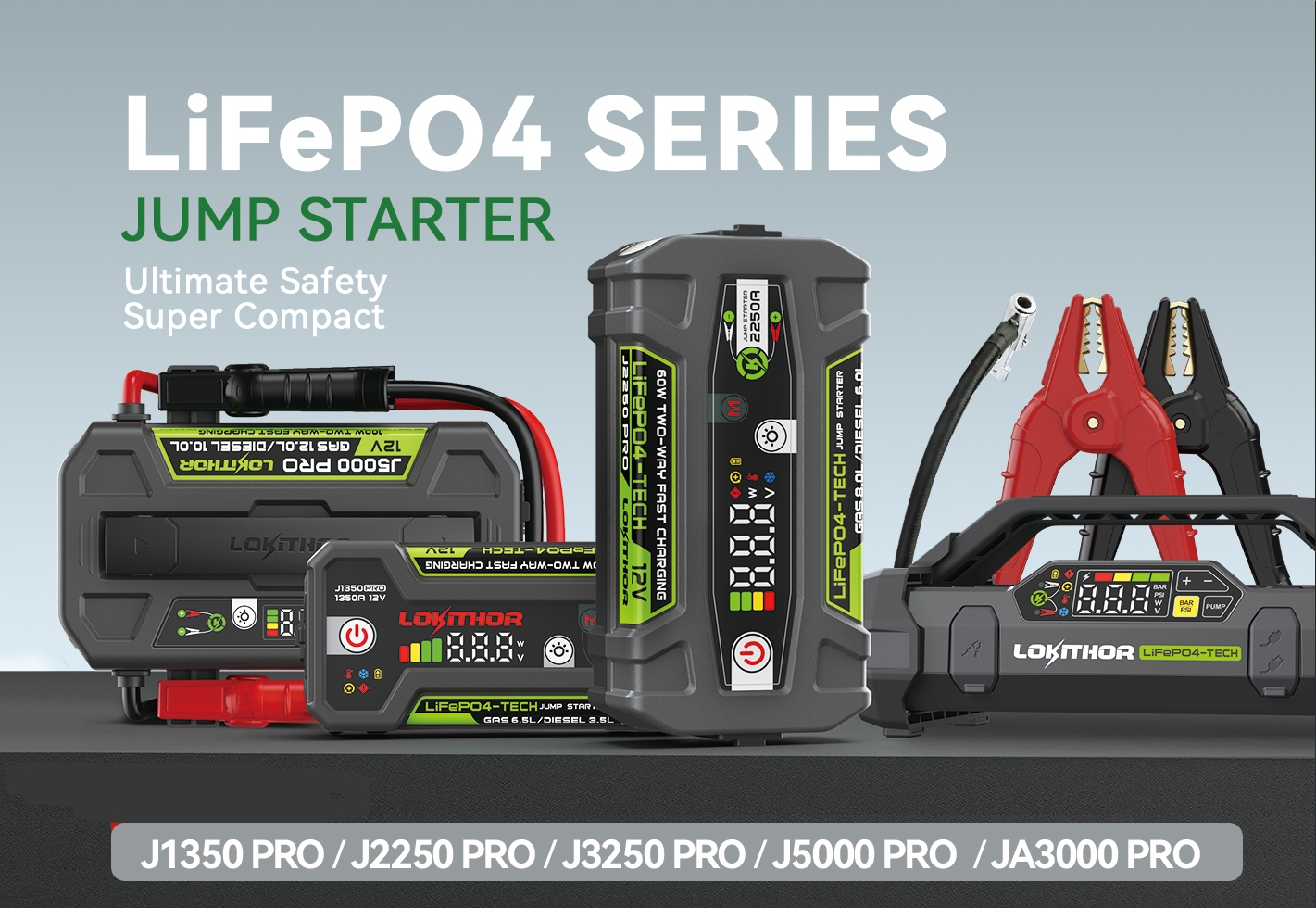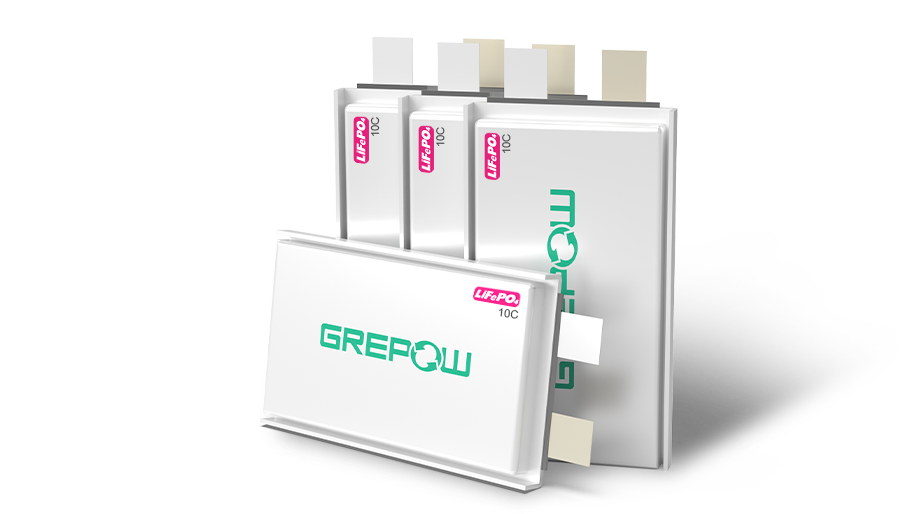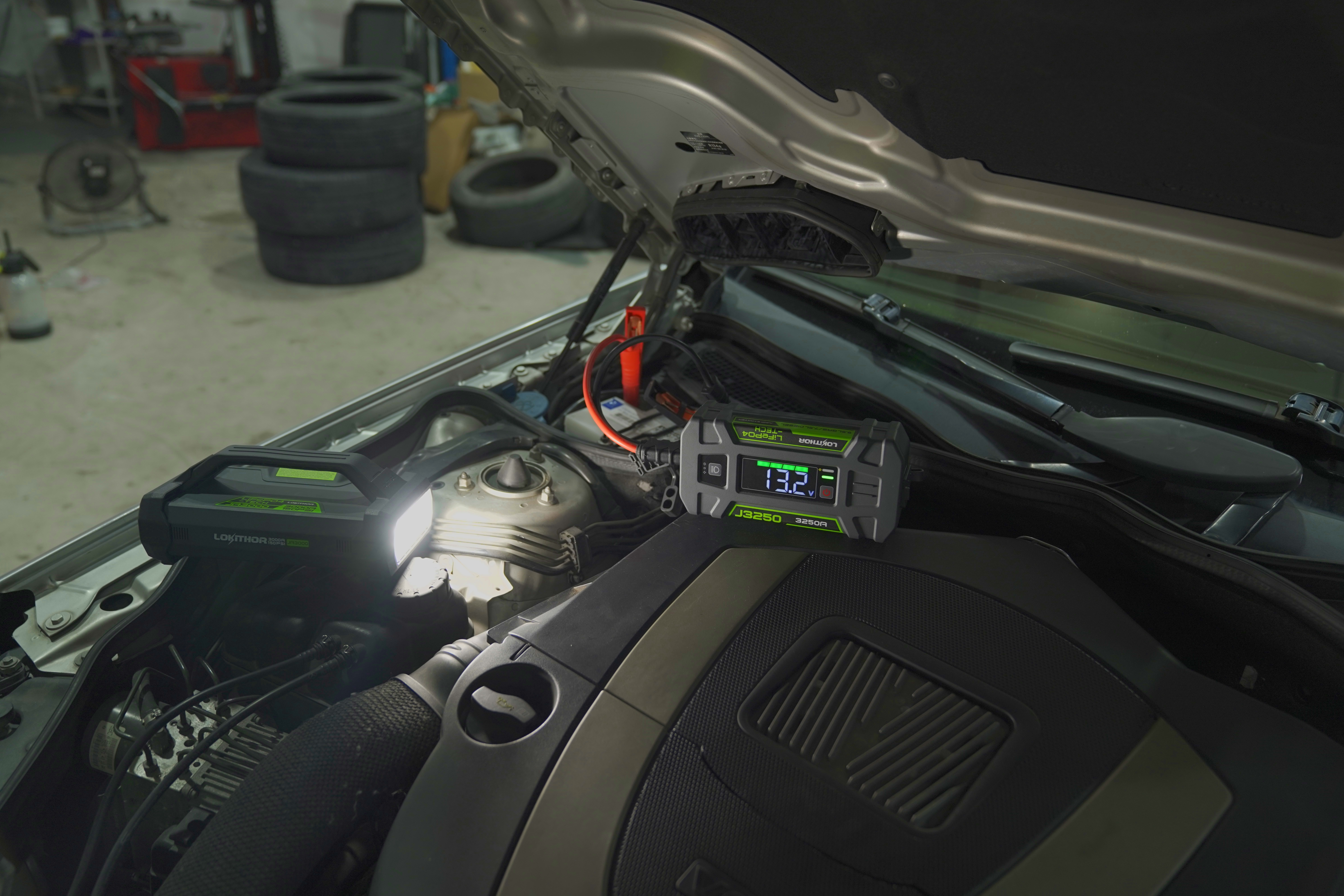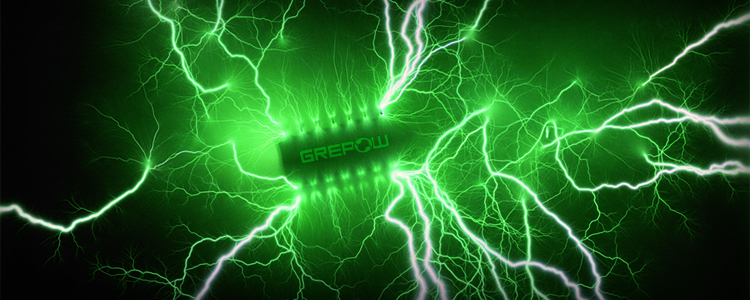 Release time: Apr 25, 2025
Release time: Apr 25, 2025
A lithium-ion battery is a rechargeable cell that uses lithium to drive its core electro-chemical reactions, enabling the storage and release of electrical energy. Compared with older nickel-cadmium (NiCd) or lead-acid batteries, lithium-ion cells deliver higher energy density, lower self-discharge rates, and longer cycle and calendar lives—so they’ve become ubiquitous for powering smartphones, laptops, automobiles, and more. In LiFePO₄ (lithium iron phosphate) chemistries, the cathode is made of lithium iron phosphate, giving the battery outstanding thermal and chemical stability. That makes LiFePO₄ especially well suited for compact, weight-sensitive portable power devices—like our LiFePO₄ Series home jump starter.

During charging, lithium ions (Li⁺) de-intercalate from the cathode, travel through the electrolyte, and intercalate into the anode; on discharge, the ions move back to the cathode, releasing electrons into the external circuit. In an LiFePO₄ cell, the LiFePO₄ cathode material breaks down into lithium ions, electrons, and an iron phosphate framework during charge, delivering both excellent cycle stability and rapid charge/discharge rates. Our LiFePO₄ Series jump starters leverage this mechanism to provide fast, stable 12 V–24 V automotive starting power in a much lighter, more compact package than traditional lead-acid units.

Lithium-ion batteries are everywhere: from consumer electronics like smartphones, laptops, digital cameras, and portable power tools—thanks to their lightweight, high-energy-density design—to electric vehicles (EVs), grid-scale renewable energy storage, aerospace systems, and medical devices, where reliable, compact power is essential. In the automotive aftermarket, LiFePO₄ jump starters have become a vital safety accessory, offering ultra-portable emergency starting solutions. Our LiFePO₄ Series integrates multiple safety protection circuits and a multi-stage smart charge algorithm so you can conquer a dead battery on the road or in the wild with confidence.

A lithium-ion cell’s useful lifespan depends on factors like usage patterns, environmental conditions, and battery size, but generally ranges from 2 to 10 years due to gradual capacity fade over time. Typical Li-ion chemistries achieve 500–1,000 full charge/discharge cycles before dropping to about 80 percent of their original capacity. LiFePO₄ cells, however, can exceed 2,000 cycles thanks to their stable crystal structure and lower stress during ion intercalation. That means our LiFePO₄ Series jump starters will remain reliable through years of repeated emergency starts and recharges, even under harsh temperatures and heavy use.

R&D is focusing on solid-state electrolytes, lithium-metal anodes, and novel high-energy cathode materials to push energy densities beyond 400 Wh/kg—while further improving safety and driving down costs. Global demand for Li-ion storage is projected to grow around 33 percent per year, reaching roughly 4.7 TWh of installed capacity by 2030. For LiFePO₄ jump starters, we anticipate faster charging protocols, bidirectional inverter outputs, and IoT-enabled smart battery management systems that communicate with vehicles and the grid—retaining the proven safety and cycle life of LiFePO₄ chemistry while embracing trends in vehicle-to-grid and mobile power solutions.
Add:290 Lindbergh Ave.Livermore.CA 94551 (USA)
Ottostr. 11. 41352 Korschenbroich. Germany (EU)
TEL:+1-925-364-7166 (USA)
+49-(0)218-25700755 (EU)